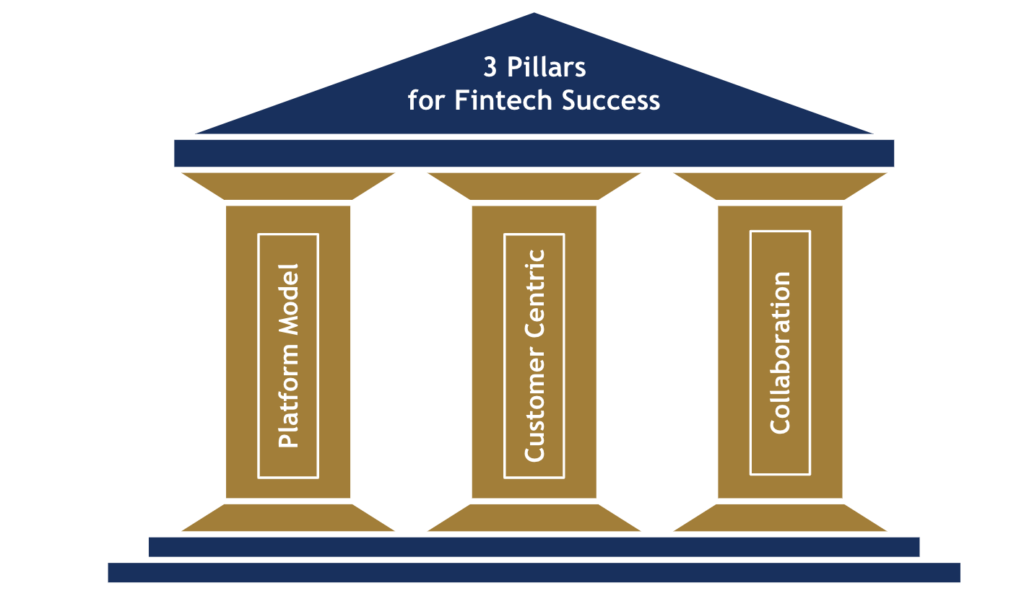For many, the fintech revolution is an obscure afterthought. You’ve probably heard that it’s coming – but nobody has told you when, where or how. For the past decade, financial technology has been everywhere – especially in adverts for investing in cryptocurrency or some ground-breaking payment system. But behind the scenes, companies have been growing. This article is the story of the world’s largest fintech company and lessons from its explosive growth.
Ant Financial’s Story
Ant Financial – an affiliate of the Alibaba group – stands head and shoulders above its competition. At its core, Ant Financial has embodied the true potential of fintech. It is the highest valued fintech in the world at $150 Billion in 2018. To put that into perspective, Ant Financial is valued at double the market cap of Goldman Sachs (currently $72.41 Billion).
In 2004, Alibaba created Alipay, a platform by first acting as a payment system like Paypal. It has since grown to 1.2 billion users and has developed beyond payments. Later, Ant Financial created an ecosystem of financial services for insurance, credit, loans, credit scoring and wealth management. In addition, Ant Financial has continuously innovated – with new blockchain services, payment methods and a growing customer base. In many regards, Ant Financial has become a severe threat to traditional banking services.
Fundamentally, Ant Financial’s success is dependent on two key trends that have swept throughout China. Those being mobile payments and money market funds. With Ant Financial’s Alipay (mobile payments) and Yu’e Bao (the world’s largest money market fund) – it has indeed grown to massive proportions – holding 54.5% market share in the Chinese mobile payments sector.
Most importantly, Ant’s explosive growth has put it in a position to negotiate its future. With its scale alone, Ant Financial has been able to form strategic partnerships, expand globally and continually alter the financial landscape.
Lessons from Ant Financial
Ant Financial is one of those rare companies – a Facebook, a Google, an Uber. Although Alibaba founded Ant Financial and had access to its associated resources and funding – some valuable lessons can still be learnt from the fintech giant.
The 3 pillars of fintech success

- Platform model (need an entirely new platform)
- Customer-centric design
- Collaboration-based thinking
Platform Model
Alibaba was brilliant in using the platform model to build Ant Financial. Alipay was a new technology in a time where fintech was an extremely new concept – untested and unknown. By first building a solid customer base with Alipay, Ant Financial slowly built a loyal customer base and a respectable level of credibility for its technology. Leveraging its strong user base – Ant Financial was able to expand its suite of financial services.
Inherently, our society is risk-averse and hesitant to adopt new technologies like virtual banking. Consequently, Ant Financial’s gradual expansion of its services built credibility and a loyal customer base.
Customer-centric Design
Ultimately, Fintech is a customer-driven sector. Mobile payment systems need customers; online insurance needs buyers, and credit scoring services require users. Despite the technology involved – whether that be blockchain, mobile payments or open banking – fintech is fundamentally built on its customers.
In the same vein, fintech’s story is one of customer-centric thinking. In the present day, everyone has high expectations about the services & experiences that they interact with. Now more than ever, customer-centric design is essential. In this regard, Ant Financial is excelling. Jack Ma’s 3-1-0 principle illustrates the company’s commitment to the customer. 3-minute credit check, one disbursement and 0 human interaction.
Collaboration is the future
Fintech has some significant benefits. It can help expand financial inclusion, improve customer experience, make more secure transactions, cut costs and improve decision making. However, fintech lacks the same infrastructure that traditional banks have. That being a well-established network of clients, regulatory compliance and the credibility that comes with existing for decades.
That is to say, even giants like Alibaba recognize the need for collaboration. Ant Financial has partnered with over 200 banks across Asia to promote its services. Subsequently, it has built strong relationships with banks like the Industrial and Commercial Bank of China (ICBC). Rather than trying to destroy the traditional sector, Ant Financial has been able to grow alongside conventional banks.
To clarify, a collaboration-based model enables the best of both worlds. It encourages mutual innovation and enables users to benefit.
Conclusion
We’ve heard that the fintech revolution has been coming for years. But, after nearly a decade of development, growth and innovation – we are starting to see the impacts. Ant Financial is an example of the fintech future. It’s platform model, customer-centric design and collaboration-based thinking are all factors that have ultimately contributed to its enormous success. Despite being so young, Ant Financial has unambiguously altered the financial sector.
Additionally – if you’re interested in learning more about fintech please feel free to sign up to my mailing list and check out my other blog posts.





